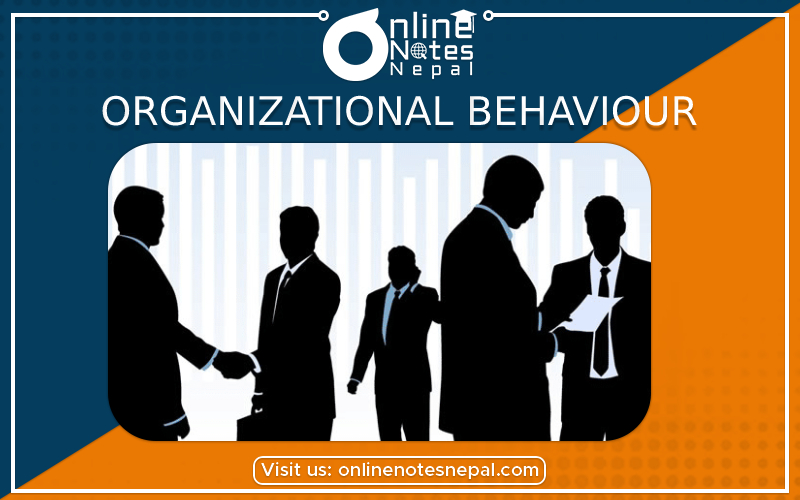Published by: Sujan
Published date: 14 Jun 2021

Organizational Behavior is the study and application of the human side of management. It is concerned with the study of human behavior in the workplace. It only shows about the behavioral management but not the whole management. So, it is specific about understanding and predicting human behavior for a balanced focus of individual and the system’s overall growth.
It is heavily concerned with people’s thoughts, feelings, emotions, and actions in a work setting.
Organization:
An Organization is a purposeful combination of two or more people who are interdependent with each other to achieve a specific goal(s). It is composed of people both individuals and groups.
S.P. Robbins opines “An Organization is a consciously coordinated with the social unit, composed of two or more people that functions on a relatively continuous basis to achieve a common goal or set of goals.”
Behavior:
Behavior includes anything a person or animal does that can be observed in some way. Behavior, unlike minds or thoughts or feelings, can be observed, recorded, and studied. No one ever saw or heard a mind but we can see and hear behavior. We can see and measure what a person does and hear and record what a person says (this is vocal behavior).
OB system:
System is a group of interrelated parts acting together to accomplish a goal. An organization is described as a system in today’s world. It is viewed as interrelated parts within a unified purpose. All systems are composed of three basic elements: input processes, and output.
From a system perspective, it is a social system. Organizations achieve their goal by creating, operating, and communicating an OB system. It also interacts with the external environment.
A. Inputs:
are independent variables. They are the determinants of productivity, absenteeism, turnover, citizenship, and job satisfaction. They are Individual-level variables, group-level variables, and organizational-level variables.
Individuals working in organizations are the building blocks for group formation. When groups are combined, they constitute an organization. Each of them is interdependent in nature.
B. Processes:
are the inputs gained by the individuals, groups, and organization as a whole are processed together to bring the outputs(the dependent variables). Inputs received are processed by
Individuals process variables: motivation, perception, learning decision making, etc.
Group process variables: group dynamics communication, leadership, power, and politics, processes, etc.
Organizational process variables: HR policies and practices, interaction with the eternal environment, formal organizational designs, etc. For details also see’ contributing disciplines to the field of OB.
C. Outputs:
are called the dependent variables. They are the key factors that OB wants to explain and predict.
Here, we explain briefly each of these dependent variables: Productivity, absenteeism, turnover, organizational citizenship behavior, job satisfaction.
Productivity: is an indicator of how much an organization is creating relative to its input. In other words, it is a measurement of performance that includes efficiency, and effectiveness.
Absenteeism: is defined as the intentional failure to go to work. The high degree of worker absenteeism may result in poor organizational productivity and vice versa.
Turnover is something that occurs when someone quits their job. It covers both voluntary and involuntary permanent withdrawal from an organization. A high level of turnover is not considered good for the productivity level.
Organizational citizenship behavior(OCB): is the extent to which an organization individual’s behavior makes a positive overall contribution to the organization.
Job satisfaction: is the amount of overall positive effect (feelings) that individuals have toward their jobs. This variable is also important from the organizational point of view because satisfaction is negatively related to absenteeism and turnover and vice versa.)
D. Feedback: The feedback system measures outputs of OB processes and feeds into the system(i.e. inputs and processing) to correct deviations and to achieve the desired behavioral results.
Basic assumptions:
Level of Organizational Behavior analysis (Scope of OB):
Contributing disciplines to the field of OB:
Emerging trends:
It means the recent trends occurring in the business world have come from good to the best-optimized changes in the system.
| From | To |
| Closed system | Open system |
| Materialistic orientation | Human orientation |
| Extrinsic motivation | Intrinsic motivation |
| Negative attitude | A positive attitude about people |
| Focus on organizational needs | Balanced focus on employee and organizational needs |
| Imposed discipline | Self-discipline |
| Authoritative managerial | Managerial role of leadership and team support |
Challenges:
Determinants of behavior- beliefs, attitudes, values, emotions, and behavior